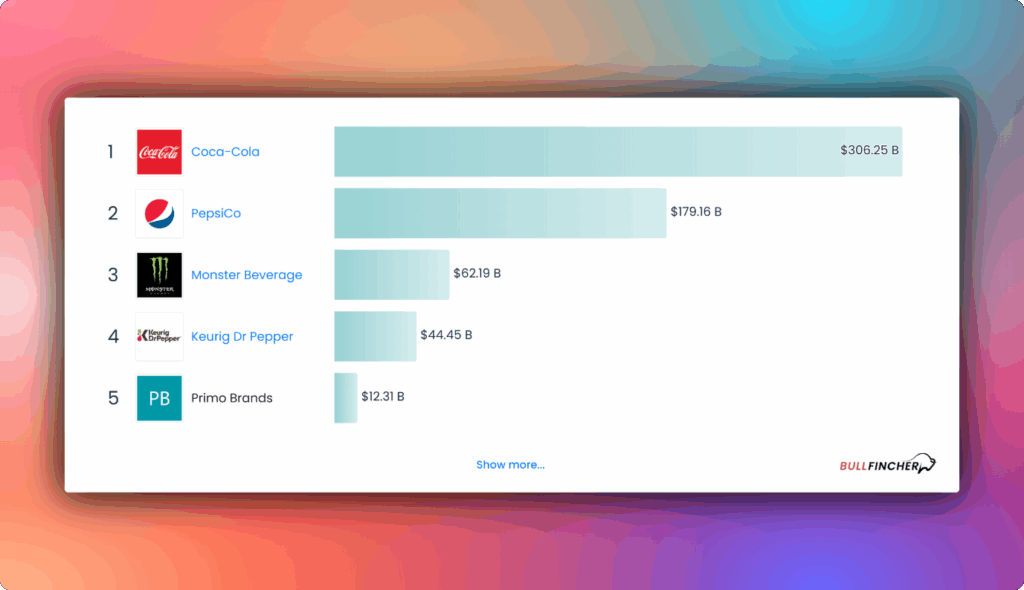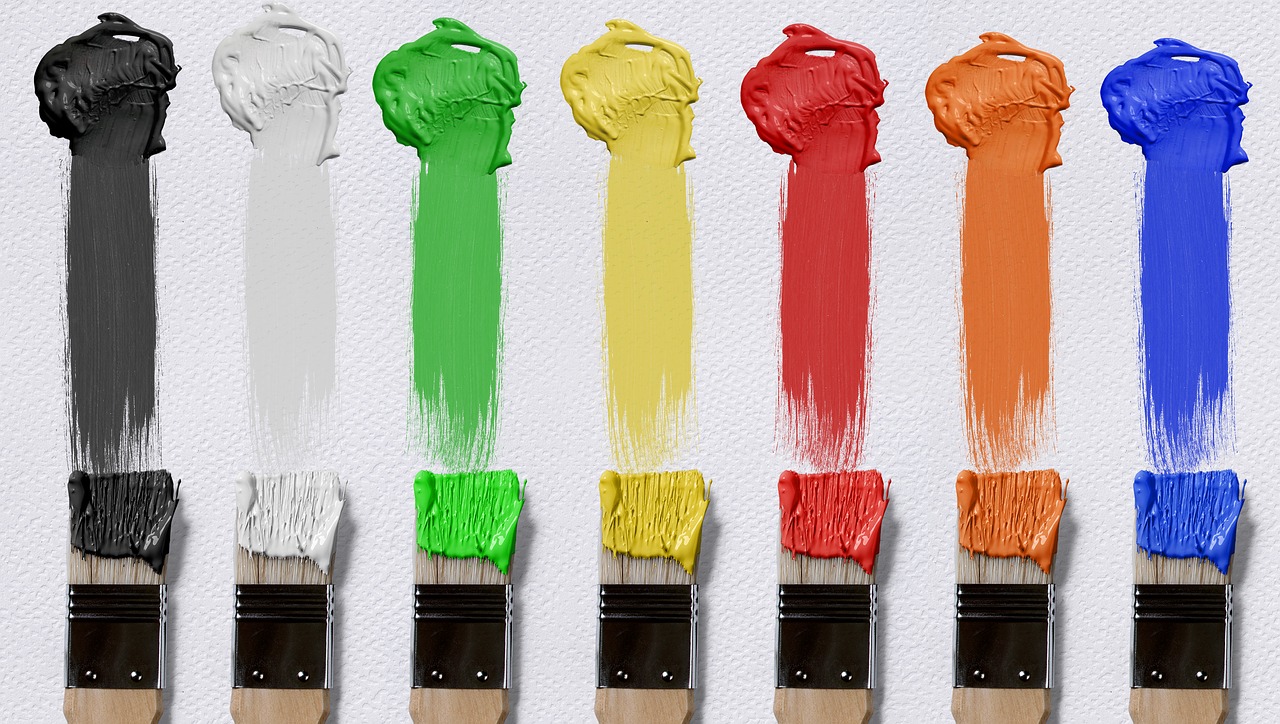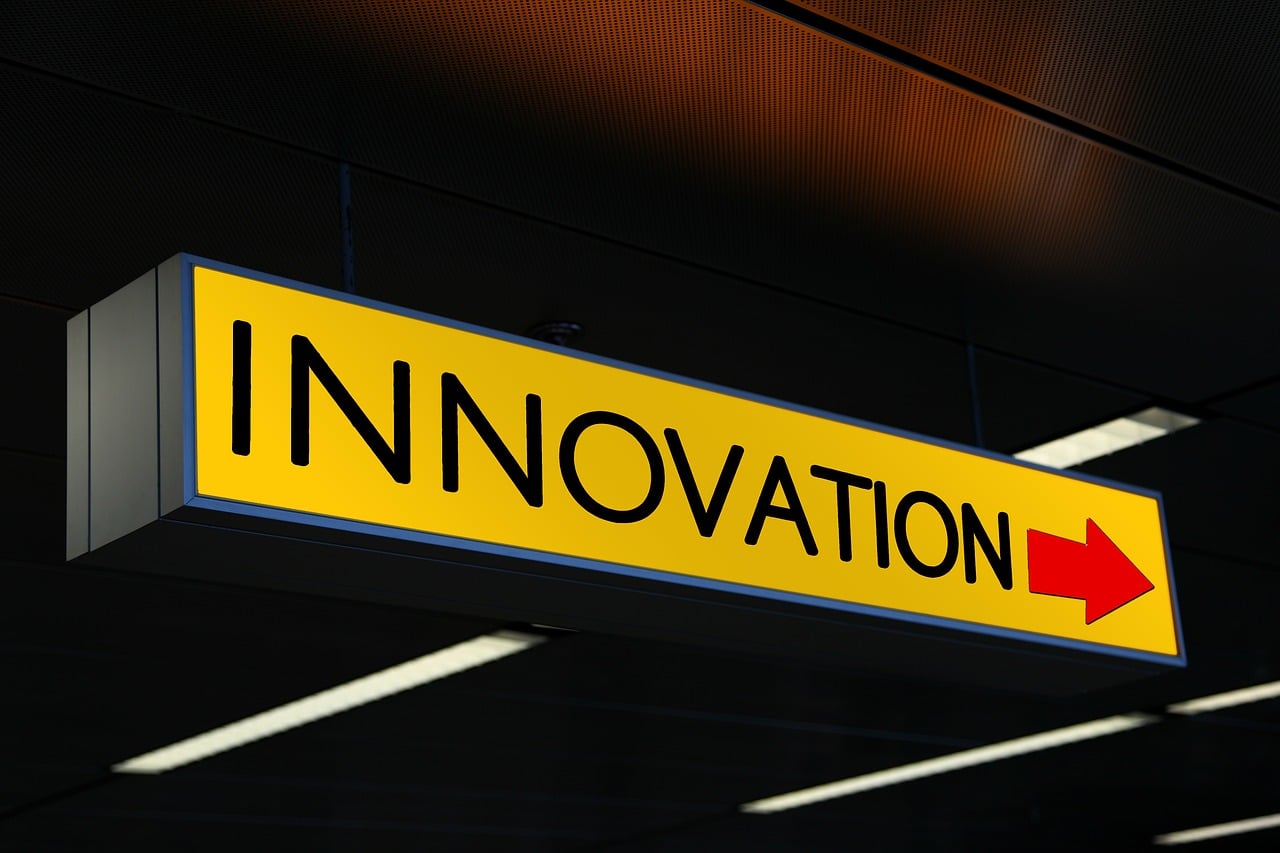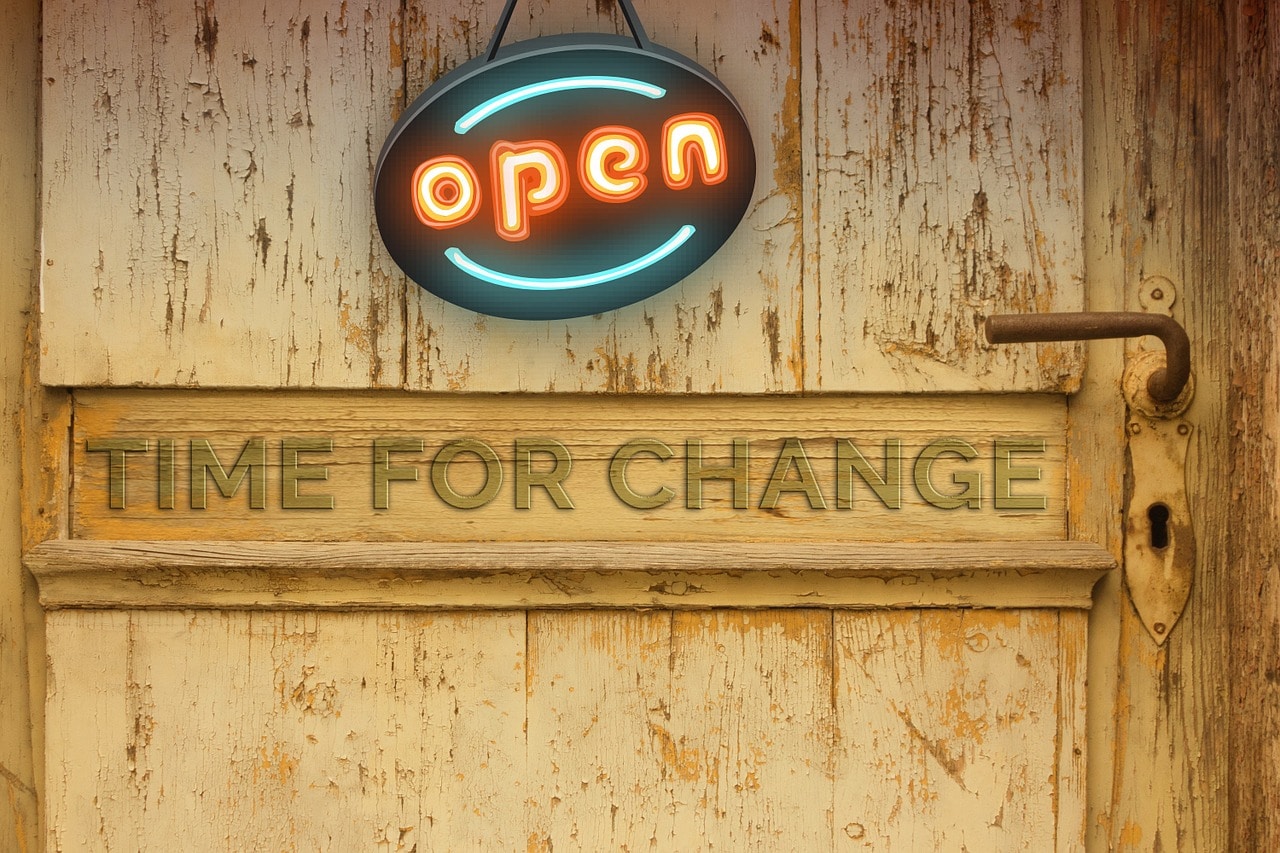Company: PepsiCo, Inc.
CEO: Ramon Laguarta
Year founded: 1965
Headquarter: Purchase, Harrison, New York, USA
Number of Employees : 319,000
Type: Public
Ticker Symbol: PEP
Market Cap (Apr 2025): $185.58 Billion
Annual Revenue (FY2024): $91.9 Billion
Profit | Net Income (FY2024): $9.5 Billion
Products & Services: Snacks | Carbonated & Non-Carbonated Soft Drinks | Cereal Products | Juices | Coffee & Teas | Water & Sports Drinks | Energy Drinks
Competitors: Coca-Cola | Monster Beverage | Keurig Dr Pepper | Nestle | Kraft Heinz | Red Bull | ConAgra Foods, Inc. | DPSG | Kellogg Company | Mondelez International | Snyder’s-Lance, Inc | ITC | Unilever | Procter and Gamble | National Beverage | Diageo
Fun Fact:
Did you know? Pepsi was introduced as Brad’s Drink in 1893 by pharmacist Caleb Bradham.
PepsiCo is a major food and beverage company founded by Caleb Bradham. It owns 23 billion-dollar brands, including Pepsi, Mountain Dew, Lay’s, Gatorade, Tropicana, Doritos, Quaker, Walkers, Baken-ets, Cheetos Popcorn, and Tostitos. The company also has regional and local brands like Gamesa, Mafer, Tortrix, and Kero Coco. PepsiCo’s marketing strategy drives sustainable growth and success. In 2024, PepsiCo generated $91.9 billion in annual revenue, with $9.58 billion in profit. [1]
Image Source: Bullfincher.io
To understand PepsiCo’s secret to success, here is a comprehensive analysis of its marketing strategy:
PepsiCo’s Target Market Overview
PepsiCo uses age, behavioral, and psychographic segmentation to define its target market. The company targets consumers aged 15-45 who enjoy carbonated drinks and snacks. Teenagers and young adults dominate this demographic. They’re active and comfortable with PepsiCo’s fizzy drinks. As of 2025, consumers enjoyed PepsiCo’s drinks and snacks over 1 billion times daily in more than 200 countries and territories worldwide.
PepsiCo targets different consumer segments with unique products. For example, the Pepsi brand has several labels like Diet Pepsi, Pepsi Max, and Pepsi Next. Each caters to different target audiences. Pepsi Max is recommended for consumers seeking low-calorie drinks. Diet Pepsi and Pepsi Next offer low-sugar beverages for diabetics and health-conscious consumers. [2]
Although PepsiCo targets young people, it is committed to marketing its products responsibly to limit children’s exposure to food and beverage advertising. It supports parents’ role and all stakeholders responsible for guiding kids’ diet and lifestyle choices. This targeting approach builds and preserves consumer trust in PepsiCo brands. In 2022, PepsiCo adopted the International Food and Beverage Alliance (IFBA) Global Responsible Marketing Policy. The company doesn’t advertise products to children under 6, regardless of content. It doesn’t market on TV programs when over 30% of the audience is under 13, unless the item meets nutritional requirements. [3]
PepsiCo’s Positioning
PepsiCo’s positioning strategy is guided by its vision: “To be the global leader in beverages and convenient foods.” It is positioned in the nonalcoholic drink and snack sector. As of Nov 2022, PepsiCo controlled 24.1% of the food and beverage industry. It is the world’s second-largest carbonated soft drink company after Coca-Cola. PepsiCo also ranks second in the global snack and bakery industry, after Nestle and ahead of Mars Inc.
PepsiCo strengthens its position by leveraging innovation, technology, and market strategies. It builds an excellent reputation by investing in communities. Since 2006, PepsiCo has provided 11 million people with safe water. It assisted six million women by investing in their communities and replenished 2.7 billion liters of water in high-risk areas. These efforts position PepsiCo as a caring, responsible, and sustainable company. [4]
PepsiCo continuously refines its positioning to align with ever-evolving consumer needs. Its history is dominated by health concerns about consuming drinks with high sugar concentrations. The company adopted several strategies to improve its positioning and reputation among health-conscious consumers. For example, PepsiCo introduced the low-sugar Diet Pepsi and Pepsi Next with 60% less sugar than the original Pepsi. PepsiCo uses strategic acquisitions to strengthen its market position. In 2024, PepsiCo planned to acquire Siete Foods for over $1 billion. This acquisition will help the company offer healthier grain-free options, including tortilla chips, tortillas, hot sauces, and other Mexican-American staples. [5]
Checkout: Largest American Soft Drink Companies by Market Cap
PepsiCo’s Value Proposition
PepsiCo maximizes customer value by prioritizing product diversity, quality, affordability, and accessibility. The company tailors its offerings for different target markets and segments to address consumers’ needs. For example, in Dec 2024, PepsiCo launched Quaker Protein Breakfast Bars for health-conscious consumers, Gatorade Midnight Black, and Doritos Golden Sriracha. These products showcase PepsiCo’s flavor innovation and ability to cater to diverse tastes and lifestyles. The company also introduced Doritos XXTRA Flamin’ Hot and Pepsi Wild Cherry & Cream in 2024, demonstrating its dedication to maximizing customer value with culturally relevant drinks and snacks. [6]
PepsiCo integrates consumer behavior into its product design and development to maximize value for different demographics. “Faced with increasing time pressures in their busy lives, Gen-Z consumers gravitate toward meals that fit their on-the-go lifestyles. Our global brands are responding,” said Mustafa Shamseldin, Category Growth Officer and CMO at PepsiCo. Research shows that 73% of Gen-Z and Millennials view “experiences” as more valuable than tangible products.
The company responded to this insight by offering this target audience away-from-home occasions. In 2024, PepsiCo partnered with Turkey’s restaurant chain Komagene to introduce new Doritos-inspired items. It plans to refine its marketing strategies to present Lay’s potato chips as a brand synonymous with celebrations. [7]
PepsiCo enhances its value proposition through product diversification and innovation. The company has expanded beyond its flagship Pepsi-Cola soda to include Lay’s and Doritos snacks, 7UP, Gatorade, Tropicana, and Quaker Oats food products. In 2024, PepsiCo’s Gatorade introduced a vitamin-enhanced Hydration Line for lifestyle-focused consumers. PepsiCo uses recent acquisitions like Sabra and Obela to meet consumer demands for protein snacks. Its small-sized portion options offer on-the-go convenience and budget-friendly snacks. [8]
PepsiCo’s Marketing Mix (4Ps)
PepsiCo’s marketing mix (4Ps) reflects its strategy to strengthen its market position. The 4Ps are product, price, place, and promotion. Each component drives PepsiCo’s marketing strategy and success. Here is an in-depth analysis of PepsiCo’s 4Ps:
1. PepsiCo’s Product Strategy
PepsiCo offers hundreds of iconic products under 23 global brands in over 200 countries and territories. The company strengthens its offerings through strategic acquisitions. It acquired Frito-Lay in 1965 and Tropicana in 1998 to solidify its positioning. The brand introduced its 1960 “Pepsi Generation” campaign to target younger consumers. In Mar 2025, PepsiCo agreed to acquire the fast-growing poppi brand for $1.95 billion.
PepsiCo acquires brands and products with a consumer-first approach and unique nutritional profiles. These elements nurture a loyal fan base and drive rapid growth. For example, the poppi soda has prebiotics, fruit juice, apple cider vinegar, and less than five grams of sugar per serving. This refreshing low-calorie soda expands PepsiCo’s better-for-you offerings to meet consumer needs. “We’ve evolved our food and beverage portfolio over many years by innovating with our brands in new spaces and through disciplined, strategic acquisitions to offer more positive choices to our consumers,” said CEO Ramon Laguarta. [9]
PepsiCo strives to produce tasty snacks and beverages that help protect the planet and people. Its global expansion strategy adheres to this philosophy. In 2021, the company launched pep+ (PepsiCo Positive) to integrate sustainability into its operations. PepsiCo aims to transition its brands to 100% recyclable or reusable packaging by 2025, reduce virgin plastic and greenhouse gas emissions by 20% by 2030, and achieve net-zero emissions by 2040. These goals will minimize the impact of PepsiCo’s production and products on the environment. [10]
PepsiCo’s manufacturing capabilities drive its product strategy. It operates hundreds of plants globally. In 2023, PepsiCo Ireland invested €39 million to expand its Cork manufacturing facilities. The plant leverages the latest technology to produce concentrate for Pepsi, Pepsi Max, Gatorade, 7Up, and Mountain Dew. Its expansion will support increased demand for PepsiCo products. It will also extend the company’s innovation pipeline to its global customer base. [11]
PepsiCo integrates innovative design into its product development. The company achieves this goal through its in-house R&D teams and partnerships. For example, in 2022, PepsiCo selected Miro as its product innovation platform. Its teams use Miro to collaborate in one shared virtual space, understand customers, and conceptualize and build on new ideas. Miro helped PepsiCo create and leverage custom templates, scale its Design Thinking approach, and shorten product development. [12]
2. PepsiCo’s Pricing Strategy
PepsiCo combines competitive, dynamic, value-based, and promotional pricing strategies to adapt to market conditions. For example, PepsiCo uses a competitive pricing strategy to set its product prices based on the prices of similar competitors’ items. It ensures PepsiCo’s drinks and snacks remain competitive. PepsiCo’s promotional pricing strategies include discounts, bundle deals, and temporary price reductions to attract cost-sensitive customers.
Another component of PepsiCo’s pricing strategy is market segmentation. The company segments its target market and tailors its pricing to different demographics, geographic locations, and consumer income levels. For example, Pepsi sodas cost more in developed countries than in emerging markets. PepsiCo uses value-based pricing to set prices based on consumers’ perceived product value. It applies dynamic pricing techniques for real-time price adjustments based on demand and market conditions. [13]
PepsiCo’s pricing strategy combines economy and premium pricing models. It offers large packages at lower prices than smaller units to encourage bulk purchases. This economy pricing strategy targets budget-conscious consumers. In early 2025, PepsiCo announced plans to introduce more variety in snack sizes to broaden its appeal to shoppers of all budgets. This “surgical” approach includes single-serve items and smaller multipacks, allowing the company to offer cheaper options without lowering prices. [14]
3. PepsiCo’s Place (Point-of-Sale) Strategy
PepsiCo sells its soft drinks and food products through retailers, groceries, convenience stores, and wholesale channels across 200 countries and territories. The company built a customized direct-to-consumer (D2C) version to connect its hundreds of mobile apps with one consumer data platform. Customers can access PepsiCo’s entire product portfolio through a localized app. In 2023, PepsiCo’s integrated app went live in Mexico and Brazil. North America’s platform was launched in 2024. [15]
4. PepsiCo’s Promotion
PepsiCo integrates promotions into its marketing strategy. It offers branded merchandise, event tickets, monetary awards, getaways, and other prizes to promote its products and boost customer loyalty. For example, in Mar 2025, PepsiCo’s Walkers Snacks brand partnered with Warner Brothers to create A Minecraft Movie. They celebrated the movie’s launch with an on-pack promotion. The promo offered a trip for two to Hollywood and instant prizes, like cinema tickets, hoodies, t-shirts, and backpacks. [16]
PepsiCo leverages media assets like teasers and catchy TV ads to boost the emotional dial with humor. It uses promos to increase customer value and loyalty. For example, in Mar 2025, PepsiCo’s Walkers brand launched its Freelunch promotion in the UK. This promo offered free lunch for a year or a £1,825 cash prize to one lucky shopper and 120 free lunches to 120 customers. [17]
PepsiCo’s Promotional Strategy
PepsiCo’s promotional strategy combines traditional and digital marketing tactics to connect with consumers. The company uses celebrity endorsements, youth-oriented events and sports sponsorships, and social media campaigns. Its iconic Super Bowl ads include Diet Pepsi’s commercial starring Cindy Crawford in the 1990s, Mountain Dew’s “Puppy Monkey Baby” in 2016, and “Michael Bublé vs Bubly” in 2019. In 2023, Apple Music replaced Pepsi as the Super Bowl’s halftime show sponsor. PepsiCo’s prebiotic soda brand poppi joined the Super Bowl ad ring for the first time in 2024.
Another component of PepsiCo’s promotional strategy is traditional marketing. The company hasn’t aired a TV commercial in two years. In 2025, PepsiCo revived its Pepsi Challenge marketing campaign from 50 years ago. It hosted blind taste tests of Pepsi Zero Sugar and Coke Zero Sugar during Super Bowl weekend. “What counts most for the Pepsi brand is reinforcing its connection with football fans and staying involved in Super Bowl conversation, even if that’s not on TV,” said Jenny Danzi, Pepsi’s senior marketing director. [18]
PepsiCo’s promotional tools include direct marketing strategies targeting specific customer segments. For example, the company provides wholesale prices to organizations. Combining these strategies helps PepsiCo maintain a dynamic and relevant brand image, boost customer engagement, and drive sales. It also incentivizes purchases by using package deals, discounts, limited-time offers, and promos. In Feb 2025, PepsiCo partnered with Merlin Entertainments to launch a new on-pack promotion across Frazzles, Chipsticks, and Cheetos brands. This promo offered 5,000 prizes, including four tickets to a UK family attraction. [19]
PepsiCo’s Customer Acquisition & Retention
PepsiCo combines tried-and-tested marketing strategies to attract and retain customers. The company engages with consumers on a human level. In the 2020s, PepsiCo made 4 changes to prioritize customer relationships, enhance customer loyalty, leverage integrated first-party data, and improve decision-making. The company uses first-party data to understand customers and adapt its marketing strategies to meet their needs. Its loyalty programs include Tasty Rewards and Power of One in the US and Canada, KazandiRio in Turkey, and Joy in Mexico. [20]
Retailers play a critical role in PepsiCo’s customer acquisition and retention strategy because they distribute its products. The company seeks to improve its relationship with retailers to attract and retain more customers. In 2022, PepsiCo made customer retention its #1 objective. The soft drink giant collaborated with its retail partners to mitigate “consumer reaction” to inflation. It helps customers overcome the high cost of living, boosting PepsiCo’s acquisition and retention rates. [21]
PepsiCo boosts customer acquisition and retention by creating a sense of community. The company achieves this goal through emotional ads and promotions. For example, PepsiCo launched the Pepsi merch promo in Jan 2025. This free-to-enter promotion offered 10,000 Pepsi-branded merchandise prizes, including clothing, bags, and skateboards. These items make customers feel part of the Pepsi community. [22]
PepsiCo’s Marketing Goals (KPIs)
PepsiCo’s marketing goals and objectives highlight how its strategies strengthen its brand identity and market presence. The company implements marketing campaigns to enhance brand awareness, boost customer engagement, drive product innovation and sustainability, and increase sales. It uses KPIs like sales revenue, gross profit margin, and net income to assess its financial performance and progress toward its marketing goals. For example, in 2024, PepsiCo’s profit grew by 5.6% to $9.58 billion. [23]
PepsiCo uses the Total Communications Plan (TCP) to connect consumer journeys with its objectives across marketing and advertising touchpoints. The TCP visualizes how marketing jobs-to-be-done and sketches will be executed, including channels, messages, and audiences. Then, the company applies a measurement and analysis plan based on its KPI framework. For example, PepsiCo prioritizes channels that drive ROI and ROAS (return on ad spend). It uses these KPIs to measure the effectiveness of its marketing messages and channels. [24]
PepsiCo has a comprehensive strategy to achieve its marketing goals. The company launched pep+ to drive its strategic end-to-end transformation and embed sustainability and human capital operation-wide. The pep+ initiative helps PepsiCo create value and drive growth by inspiring positive change for the planet and people. It uses KPIs like global rankings to evaluate the effectiveness of its marketing strategies. As of Jan 2025, PepsiCo was #42 on Fortune’s “America’s Most Admired Companies” list. It was #44 on Fortune 500 and #123 on Fortune Global 500. [25]
Image by : Alexander Sergienko
PepsiCo runs marketing campaigns to accelerate its global expansion and strengthen market presence. It seeks to consolidate and increase market share in North America and Europe and enter new emerging markets in Asia-Pacific and Africa. In 2023, PepsiCo had over 1,000 manufacturing facilities worldwide, including 291 company-owned plants. The soft drink giant launched its new “The PepsiCo Way” initiative to strengthen its global supply chain. It also integrated purpose and sustainability in the supply chain to expand sustainably. [26]
PepsiCo’s marketing strategy is paying off. Pepsi is North America’s second most popular soda after Coke. In 2021, Pepsi’s market share in the carbonated soft drink category was 8.9%. PepsiCo aims to outperform competitors by tailoring its marketing efforts and products to fit local cultural nuances and consumer preferences. For example, PepsiCo launched new international flavors in early 2025, including honey butter in Korea, Tzatziki in Greece, and Masala in India. [27]
References & more information
- Ridder, M. (2025, Apr 8). PepsiCo’s net revenue worldwide 2014-2024, by division. Statista
- Wang, J. (2021, Dec 14). How Coca-Cola and Pepsi use segmentation in the Consumer Product Industry. Atlantis Press
- PepsiCo, Inc. (2025, Jan 13). Our Impact: Responsible marketing. PepsiCo.com
- Alonso, T. (2022, Nov 24). How Pepsi Leveraged Flexibility for Strategic Growth. Cascade
- Market Lens (2024, Oct 1). PepsiCo’s $1 Billion Bet on Healthier Snacking: The Strategic Acquisition of Siete Foods. Kavout
- RI Staff (2024, Dec 9). PepsiCo at NACS: CPG Strategies for 2025. Rethink Industries
- Beaton, K. (2025, Jan 2). Exec Notes: PepsiCo 2025 Gen Z Playbook. Food Institute
- Daily, R. (2025, Feb 20). PepsiCo tees up functional innovation with Gatorade & Propel. Food Navigator
- PepsiCo, Inc. (2025, Mar 17). PepsiCo to acquire poppi. PepsiCo.com
- Golden, I. (2024, Jun 2). PepsiCo’s Global Expansion: A Promising Growth Strategy. THX News
- Invest in Ireland (2023). PepsiCo Announces €39m Expansion of its Manufacturing Facility in Little Island. IDA Ireland
- Dilley, S. (2023, Dec 18). PepsiCo brings new products to market faster with Miro. Miro.com
- Lau, S. (2025, Jan 12). Pepsi’s Pricing Strategy: Key Components and Market Impact. Jet Newswire
- Wolff, R. (2025, Feb 4). PepsiCo introduces “surgical” price strategy amid softening demand for snacks. E-Marketer
- Koetsier, J. (2023, Dec 6). PepsiCo: New Strategy for Mobile, Customer Data, and Digital Transformation. Forbes
- Marino, A. (2025, Mar 27). Walkers Snacks and Warner Brothers celebrate the A Minecraft Movie launch with an on-pack promotion. Asia Trader
- PepsiCo Joy (2025, Mar 31). Walkers UK: The Freelunch promotion. PepsiCo.eu
- Meyers, A. (2025, Feb 5). Inside PepsiCo’s Super Bowl marketing playbook. Marketing Brew
- Thomson, J. (2025, Feb 24). PepsiCo teams with Merlin to offer on-pack promos. Talking Retail
- Jadon, A. (2021, Oct 20). How PepsiCo uses first-party data to build direct relationships with consumers. Think with Google
- Carroll, N. (2022, Apr 26). PepsiCo makes customer retention its “number one objective” as the cost of living spirals. Marketing Week
- PP Staff (2025, Jan 4). Pepsi’s Win Pepsi Merch Promotion. Past Promotions
- Pereira, D. (2025, Apr 15). Pepsi Marketing Strategy. Business Model Analyst
- WARC Opinion (2023, May 2). PepsiCo’s approach to the new path to purchase and changed dynamics in marketing for a fast-evolving world. WARC
- Fortune (2025, Jan 1). PepsiCo in Fortune Rankings. Fortune.com
- Søndergǻrd, T. (2024, May 5). How Does PepsiCo Manage to Navigate a Market Characterized by Intense Competition? St. Johns Scholar
- Ridder, M. (2024, May 16). PepsiCo: Statistics & facts. Statista
- Featured Image by Ja San Miguel
- Can Image by Alexander Sergienko
Tell us what you think? Did you find this article interesting? Share your thoughts and experiences in the comments section below.















Add comment